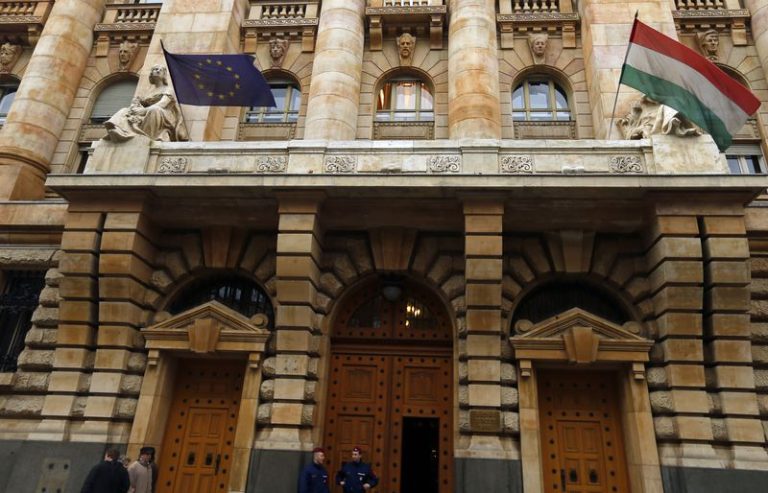By Gergely Szakacs and Krisztina Than
BUDAPEST (Reuters) -Hungary’s central bank left its base rate steady at the European Union’s joint highest level of 6.5% on Tuesday, as widely expected, after falls in the forint since its latest rate cut and tax hikes have sharply raised next year’s inflation path.
S&P Global said on Thursday that central Europe’s monetary easing campaign had entered a riskier stage, with a higher likelihood of policy missteps due to global economic uncertainty and exchange rate volatility.
The Czech National Bank is also widely expected to leave its main rate unchanged on Thursday, which would mark the first time since Hungary started cutting rates in May 2023 that all four of the region’s central banks have kept rates on hold in the same month.
The National Bank of Hungary (NBH) has cut interest rates by a combined 11.5 percentage points, aided by a retreat in inflation from the EU’s highest levels, but has now held borrowing costs steady for a third successive meeting.
The forint, which sank to record lows versus the euro in late-2022, has fallen some 4% since the bank’s latest rate cut on Sept. 24 and is down nearly 7% versus the euro this year, underperforming central European currencies.
At 1505 GMT, it traded at 409.6 per euro, weaker than levels around 409.1 before the rate announcement.
The bank said the forint’s falls and tax hikes to rein in Hungary’s chronic budget deficit have lifted next year’s inflation path by about 50 bps to 3.3% to 4.1% and delayed the achievement of its 3% inflation target to 2026.
Asked why the bank avoided rate tightening despite falls in the forint and the higher inflation outlook, Deputy Governor Barnabas Virag said the NBH tightened monetary conditions by shelving the one or two rate cuts it had previously flagged.
“When we discussed the monetary policy outlook in September, expectations were for the central bank to deliver another rate cut by the end of 2024 and another one in the first quarter of 2025,” Virag said.
“Compared to that, the central bank has definitely tightened, because we know for a fact that we have not delivered another rate cut this year,” he said, adding that the 6.5% base rate level was “appropriate” based on the current outlook.
Virag said there were upside risks to inflation and said the key question for next year, when a new governor takes over, would be whether Hungary is able to keep inflation in a lower range on a sustained basis.
Even with the bank raising its inflation forecast for next year, one policy maker again proposed a 25 basis point rate cut on Tuesday in a sign of a rift within the rate-setting Monetary Council, which had previously handed down unanimous decisions.
The latest Reuters poll forecasts project just 100 bps worth of additional rate easing in Hungary and Poland by the fourth quarter of 2025 and 75 bps in the Czech Republic and Romania.
After rate cuts worth hundreds of basis points, risks from wage growth, sticky services inflation, high budget deficits and currency swings amid fears of global trade wars are complicating the policy outlook in central Europe.

